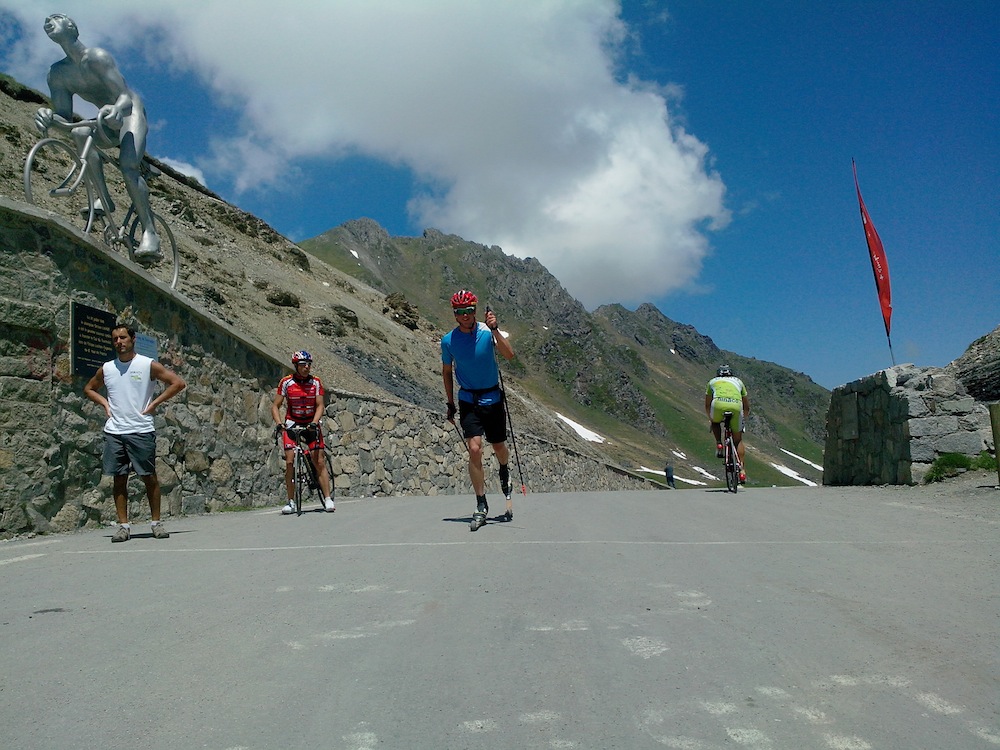
In Albu, Estonia, in 2012, there was a moment where Erik Bjornsen had an epiphany. He was there on a pre-U23 World Championship trip with other American athletes and had just completed two Scandinavian Cup races against Europeans doing a similar warm-up series before heading to Erzurum, Turkey, for the championships.
Bjornsen finished outside the top 30 in both the classic sprint and the 15 k classic in Estonia, and noticed that two of the podium finishers, Norway’s Pål Golberg and John Kristian Dahl, went one-two in both races. For Bjornsen, whose talents more heavily favored sprinting then, the realization made him resolve to become a better distance skier.
“I really got my eyes opened up,” Bjornsen said of the experience. “I just started realizing, even though you see those guys just race World Cup sprints — sometimes you’ll see them jump in distance races, but not often — people tend to think, ‘Oh, you need to focus on one [discipline].’ I just started realizing that in order to be a good sprinter on the World Cup, especially if you want to make it past the quarterfinals and the semifinals, you really have to be a good distance skier. And so I looked at that, and that’s why I was like, ‘I need to change my focus and try to become and all-around skier.’”
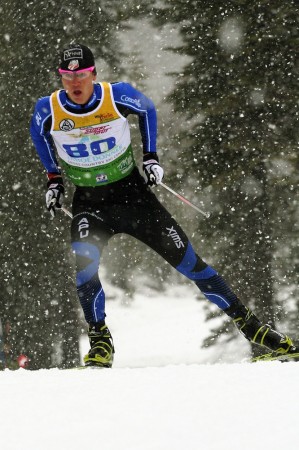
Last season, the 22-year-old Methow Valley, Wash., native proved he is well on his way to becoming that all-around skier. He and Alaska Pacific University coach Erik Flora increased his training load last summer and a few months later, Bjornsen won his first national championship in Soldier Hollow, Utah, in the 15 k freestyle, bringing confirmation that the changes were working.
He received further confirmation when, at the end of the season, he held off Kris Freeman in the final climb of SuperTour Finals in Truckee, Calif. Flora noted at the awards ceremony afterwards that Bjornsen’s performance that week was a slight surprise, even for them.
“Last summer we made a pretty big push in his training, and there’s always the chance that it goes great and there’s the chance that it doesn’t go as well,” Flora said. “You always have goals and think you can reach a certain level, but to see how strong he was during this tour, I think it surprised both of us.”
In the pursuit of even bigger goals for the upcoming season, Bjornsen has continued to fine-tune his summer training. Earlier this month he traveled to Villard, France, to both visit his girlfriend, University of Alaska, Anchorage’s NCAA Champion and former French biathlete Marine Dusser, and to train with French national team members in the Pyrénées.
Between the long mountain runs, rollerski intervals and speed sessions with athletes like Robin Duvillard, Bjornsen learned his training isn’t so different from his foreign competitors’. Just as Liz Stephen’s recent training trip to Norway boosted her confidence in her own program, Bjornsen came away from the training block in France more self-assured. He points to this lesson first as his most important takeaway from the trip.
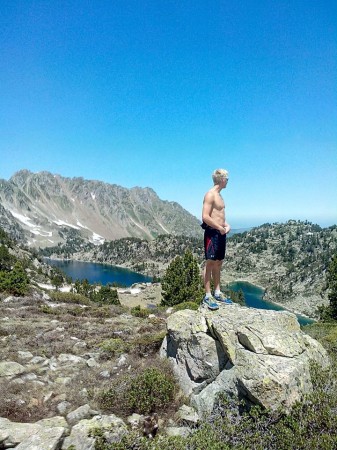
“I pretty much felt like I did a normal week of training for me, right now, and it was cool to see,” Bjornsen said. “It definitely gave me confidence. It’s a little different setup than what we do here at APU, but it’s the same idea.”
For reference, Duvillard’s top World Cup result last season was a 13th-place in the Davos, Switzerland, 15 k freestyle, a ranking Bjornsen would like to see himself reach more frequently in the future. After beating Duvillard on a few intervals, Bjornsen says that goal feels a bit closer.
“I felt really fit and was able to push — especially on the classic speed day, [I] beat a lot of those guys, so I was psyched with that,” he said. “And they’re all really good skate skiers, so for the skate intervals it was interesting to train with them.”
One of the roads Bjornsen climbed with the French athletes on rollerskis has been used in past editions of the Tour de France. Bjornsen is not an avid cycling fan, but has immense respect for any athlete that can complete a multi-week tour.
“I didn’t know much about the Tour until this year, but it was fun to learn about and kind of follow,” he said. “Those athletes are crazy — that whole sport, being able to do a tour for 30 days or three weeks or however long it is, I can’t even imagine. The tours we do in cross-country are like five or six days and I feel like I’m wiped out.”
On one of the last days he was in the country, the day he turned 22, Bjornsen entered a 15 k trail race for fun, his first running race since high school. He finished second to Matti Haikinen, the Finnish World Cup veteran and 2011 World Champion.
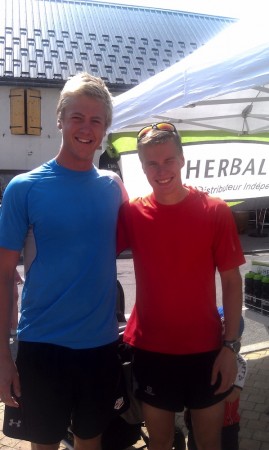
“I ended up being able to run with him until six or seven k, to the top of the course,” Bjornsen said. “He kind of took off on the rolling section at the top and on the downhill he put some time on me, so he ended up being me by like a minute and a half.”
In training with French national team biathletes and cross-country skiers, Bjornsen also learned they make more of an effort to seek out rollerski terrain that closely resembles World Cup homologated courses. Now that he’s back in Anchorage, Bjornsen has started applying this to his own training.
Bjornsen feels that another benefit the trip afforded was practice with travel, a necessary component of any North American’s international racing career. He’s learned that getting better at the small things — recovery, nutrition, international flights — goes a long way in producing better race results.
“I think it’s important to just get more comfortable with jet lag,” Bjornsen said. “It’s important to not think about it too much, and it’s something that, as Americans, we’re going to have to deal with our whole ski careers.
“For me, just getting more professional with the sport has seemed to help me make steps in my racing,” he continued. “Everybody, in order to reach the top, you really have to live cross-country skiing at every hour of the day.”
In addition to making an effort to dial in the details, Bjornsen has continued to make incremental jumps in his training to go along with stepwise racing goals. As one of the younger Olympic hopefuls on the U.S. Ski Team, Sochi is certainly one of them, but he is also focused on making another jump at the U23 level. He cracked the top 10 last year in Liberec, Czech Republic, in the classic sprint, but wants to do more in his final year of being eligible for the event.
“This year everybody’s excited about Sochi, and I’m trying to…not focus on that too much, but also focus on the big picture,” Bjornsen said. “I’m looking forward to U23s in Val di Fiemme this year — my parents are going over to watch and that’s their first time abroad — so I think that’s my main goal next year, is to have some breakout races in Val di Fiemme… This’ll be my sixth year going, and every year I feel like I’ve gotten a little closer to my big goal.
“And of course the Olympics would be awesome as well,” Bjornsen added, “but the goal is just to focus on the little things, and continue to up the training a bit and not make any radical changes.”
Beyond this season, Bjornsen wants to continue to develop his sprinting and distance skiing. He has ambitions of competing in the Tour de Ski one day, which he thinks of as the pinnacle event for a well-rounded skier. As an American, in particular, he thinks that’s a niche that still needs to be filled.
“Right now we have [Noah] Hoffman, who’s focused on distance skiing, and [Andy] Newell, who’s focused on sprinting, and Freeman, who’s a distance skier, and Simi [Hamilton], who’s a sprinter,” Bjornsen said. “And I wanted to be, maybe, one of the first guys in the U.S. that [could] be good at a tour race. The Tour de Ski is such a cool race; I’d love to compete in that some day.”
The Tour de Ski is further down the line, however. In the more immediate future, Bjornsen will start next season following a similar schedule to the one he’s had the last few years by focusing on performing well in familiar territory before heading to Europe. He’ll be at West Yellowstone and Bozeman, Montana, for the opening SuperTours, spend the holiday at home in Washington and race at U.S. Nationals in Soldier Hollow in January. After that, hopes to mirror his pre-U23 Championship schedule from last winter, when he was able to hop in a few World Cups before the championships.
From there, Bjornsen’s schedule is dependent on how fast he’s skiing.
“There’s a lot of different routes that could happen from there — if things are going really well, maybe Sochi,” he said.
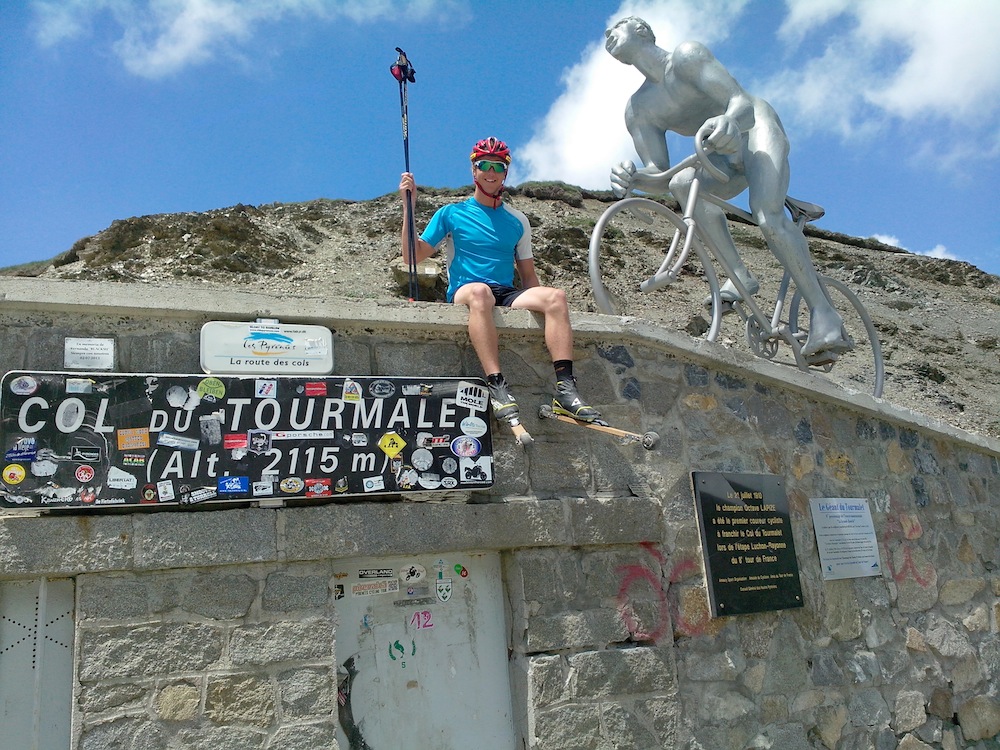
Audrey Mangan
Audrey Mangan (@audreymangan) is an Associate Editor at FasterSkier and lives in Colorado. She learned to love skiing at home in Western New York.



